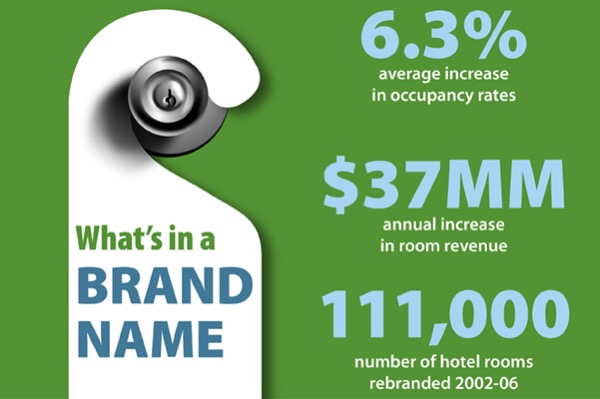
The power of brand names
UD's Yi-Lin Tsai studies the effect of brand names on hotel performance
10:50 a.m., May 9, 2016--With the summer holidays fast approaching, travelers on the hunt for accommodations might find it easiest to simply choose a hotel with a familiar brand name.
But new research from the University of Delaware’s Yi-Lin Tsai paints a more complex picture of the relationship between hotels and their brand names.
Research Stories
Chronic wounds
Prof. Heck's legacy
Tsai pointed out, for example, that about one third of hotels have been rebranded – swapped brand identities from Hyatt to Hilton, for example – since opening.
“The problem is that the practitioners don’t seem to have very good sense of what the impact of rebranding on performance,” said Tsai, assistant professor of marketing.
His research is groundbreaking in its efforts to quantify the impact of this popular phenomenon on hotel performance.
The paper’s first finding: Rebranding can be highly profitable, but lots of variation occurs.
On average, rebranding resulted in a 6.3 percent increase in hotel occupancy rates. If measured for the entire hotel industry, this amounts to an increase in room revenue of $37 million per year.
However, the study’s wide range of data demonstrated that rebranding isn’t a surefire profitable option for every hotel. This is important to consider, Tsai said, when performing a cost-benefit analysis and deciding whether or not to make the huge investment that comes with rebranding.
Tsai’s team also created a graph ranking hotel chains by brand strength, demonstrating which hotel chains provide increases in occupancy and revenue when rebranding.
This means that for the first time, the hotel industry has empirical support for rebranding as a way to enhance value, as well as specific guidance on which strategies increase performance and by how much.
But why does rebranding lead to increased performance or occupancy? Tsai’s research found that only 60 percent of this increase could be attributed to positive brand identities.
“Those kind of increases in hotel performance can not be purely explained by brand itself,” Tsai said. “We found that it could be attributed to the fit of the brand and the property itself.”
Tsai calls this “property-brand fit,” or how well the physical property aligns with the needs of the new brand.
That this could account for such a significant percentage of gains illustrates an important point to keep in mind about the hospitality industry: Hotel properties and brands are separate components, and lots of variety exists within both.
This might serve as a reminder to travelers to check reviews of individual hotels before selecting holiday accommodations based purely on brand names.
After all, Tsai said, guests don’t visit for the brand name; they visit for the experience.
“People usually use brand to infer what their hotel quality is, but sometimes it might not be the case,” he said. “There’s variation.”
“Brand is important, but it’s not everything.”
Article by Sunny Rosen








